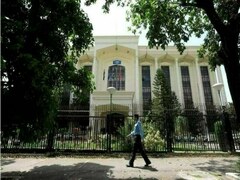WASHINGTON: After a headlong rush this year to raise interest rates, the Federal Reserve switched this month to a more nuanced approach that was seen as a compromise between officials most concerned about high inflation and others worried that more large rises in borrowing costs might crater the economy or stress key markets.
The minutes of the Nov. 1-2 policy meeting, scheduled to be released later on Wednesday, may show just how deep any emerging disagreement has begun to run at the U.S. central bank as it ends the push to “front-load” rate increases and begins feeling the way in smaller steps to an eventual stopping point.
The Fed’s Nov. 2 policy statement tried to bridge any gaps, pledging “ongoing increases” in rates until they were “sufficiently restrictive” to control inflation, while also saying the size of upcoming hikes would account for “the cumulative tightening” done so far as well as the fact that the impact of those increases may not be felt for some time.
Left unclear: How much higher Fed officials feel they need to raise rates, and how strongly the sense of risks is shifting towards concerns about “overshooting” and doing more damage to the economy than is necessary to control inflation.
US Fed opens policy meeting with steep rate hike on the table
The minutes “might show some building differences between those officials that want to take a more wait-and-see approach and those … who continue to present a more definitive view that financial conditions will need to tighten further,” Citi analysts wrote on Sunday.
At this point, Fed Chair Jerome Powell and even the more traditionally dovish policymakers remain aligned behind further rate increases, and Powell said it remains riskier to fall short in fixing the worst outbreak of inflation since the 1980s than it is to raise rates too high.
“If we were to over-tighten, we could then use our tools strongly to support the economy, whereas if we don’t get inflation under control because we don’t tighten enough, now we’re in a situation where inflation will become entrenched and the costs, the employment costs in particular, will be much higher potentially,” Powell said in a news conference after the end of the November policy meeting. “From a risk management standpoint, we want to be sure that we don’t make the mistake of either failing to tighten enough, or loosening policy too soon.”
Yet with Fed rate increases since March totaling 3.75 percentage points, including moves of three-quarters of a percentage point at the last four meetings, policymakers have indicated they are ready to slow down from the fastest pace of central bank tightening since the early 1980s.
With recent government data showing slower-than-expected inflation, several Fed officials have said they are comfortable with a half-percentage-point increase at the Dec. 13-14 meeting - an expectation embedded in current market pricing for contracts tied to the central bank’s policy rate.
The minutes, which are due to be released at 2 p.m. EST (1900 GMT), could help show just how broadly that sentiment is shared, and how close members of the policy-setting Federal Open Market Committee may feel they are to pausing rate increases altogether.
A more precise read on that will come at the end of the meeting in three weeks when officials release new quarterly economic projections including their outlook for unemployment and inflation next year and the appropriate path for monetary policy.
























Comments
Comments are closed.